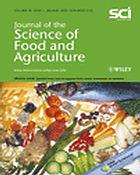
Ricerca & Innovazione > Contributi Scientifici
Giorgi A., Panseri S., Mattara M., Andreis C., Chiesa L.M.
BACKGROUND: The phenolic content, volatile compound fingerprint and antioxidant capacity of Waldheimia glabra (Decne.) Regel (Asteraceae), a wild plant from the Himalayan mountains used in Sherpa religious rituals and in traditional medicine, were determined for the first time to investigate its suitability as a source of natural antioxidants.
RESULTS: The total phenolic content and antioxidant capacity of dried and powdered plants from two different altitudes (5000 and 5200 m above sea level) in Khumbu Valley, Nepal were estimated by the Folin–Ciocalteu and 2,2-diphenyl-1-picrylhydrazyl radical methods respectively. The volatile organic compound (VOC) fingerprints from leafing plants (in vivo and in situ VOC sampling) and from dried plant samples were evaluated by headspace solid phase microextraction. The results indicated that W. glabra was a good source of phenolics with antioxidant properties. A correlation between total phenolic content and antioxidant capacity was found (r2 = 0.9111). Seychellene, a volatile compound that characterises patchouli oil, was detected for the first time in a species of the Asteraceae family.
CONCLUSION: Waldheimia glabra was proved to be a good source of antioxidants, partially supporting its traditional uses. Further studies aimed at deepening knowledge on W. glabra bioactivity and its possible uses will be of interest, considering the lack of proper scientific awareness regarding these aspects.
